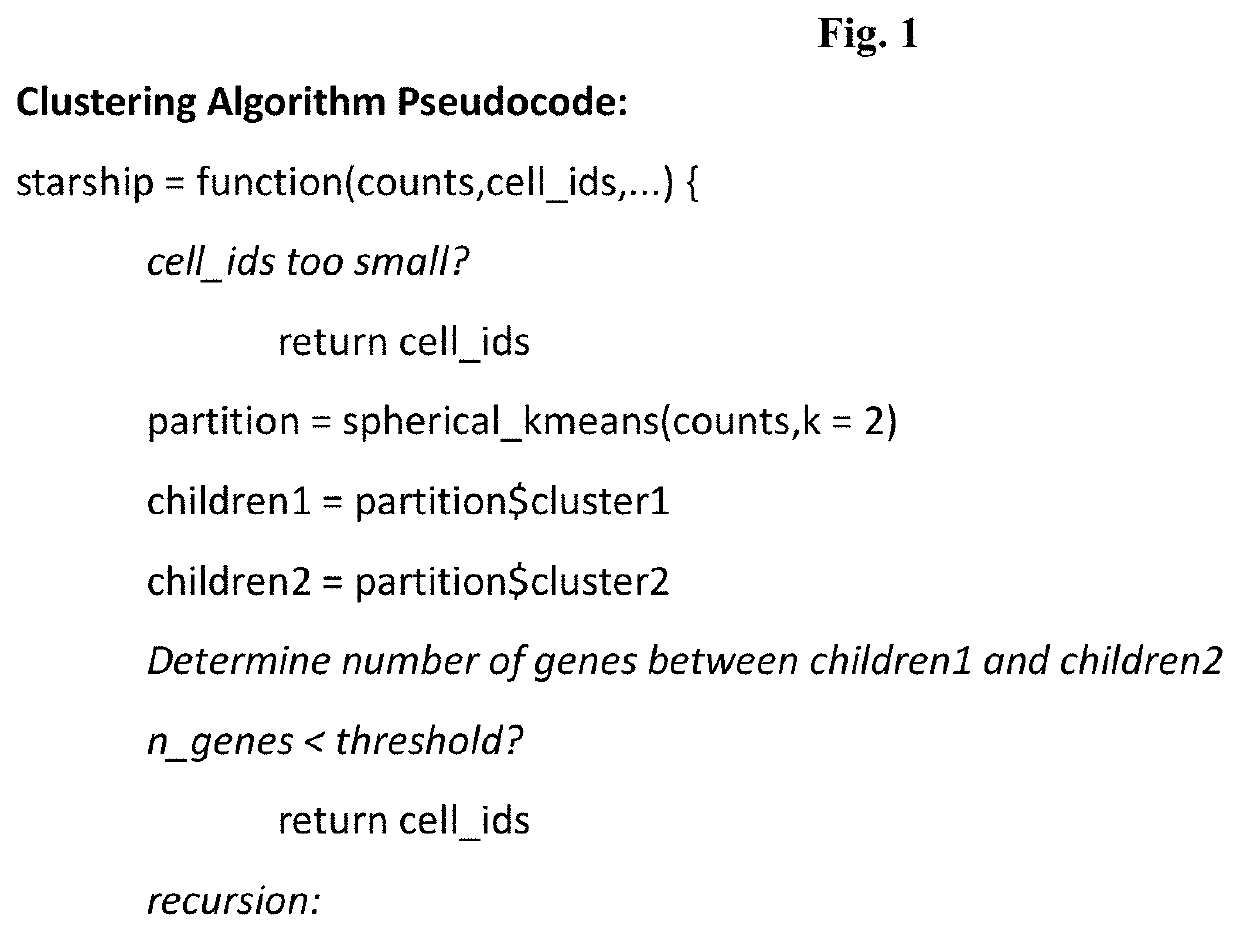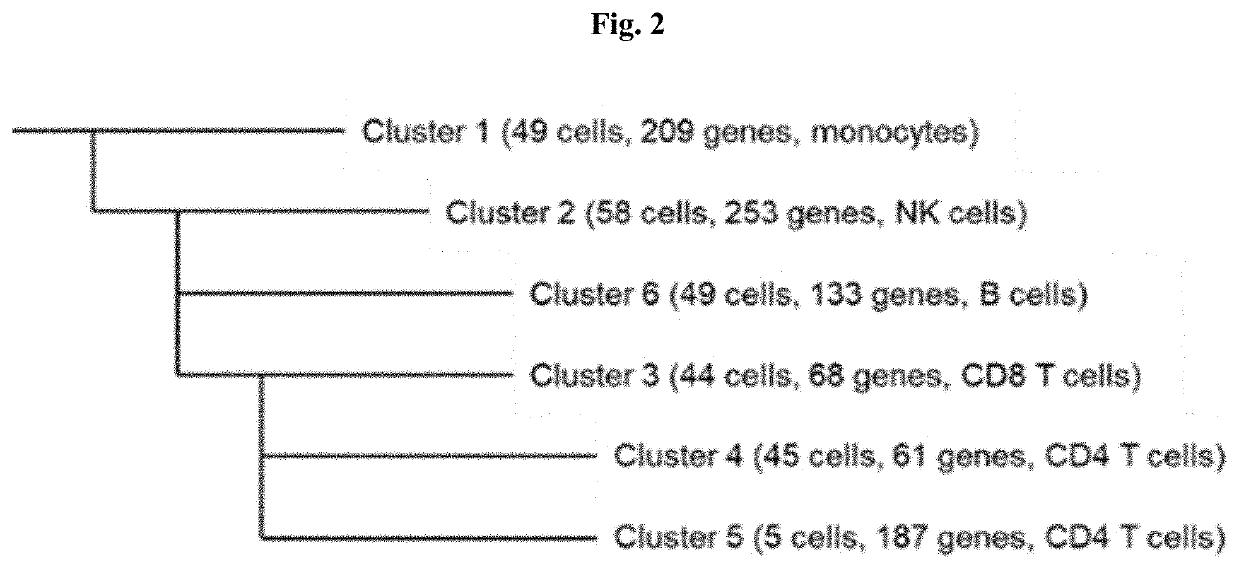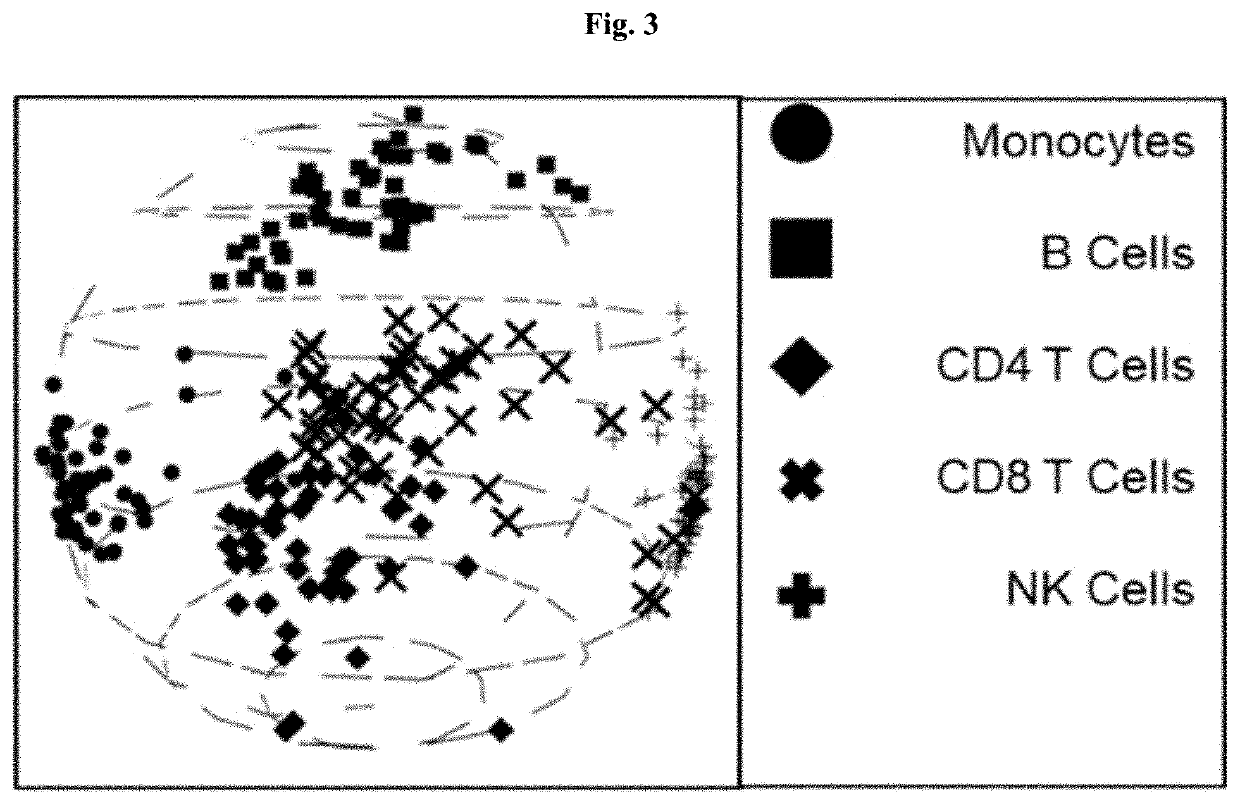Systems and methods for single-cell rna-seq data analysis
a single-cell rnaseq and data analysis technology, applied in the field of systems and methods for single-cell rnaseq data analysis, can solve the problems amplification bias etc., and achieve the effect of low library size, low sequencing depth, and lessening amplification bias
- Summary
- Abstract
- Description
- Claims
- Application Information
AI Technical Summary
Benefits of technology
Problems solved by technology
Method used
Image
Examples
example 1
g of Peripheral Blood Mononuclear Cells (PBMCs)
[0106]According to methods and systems provided herein, 250 PBMCs (50 each of CD14 monocytes, CD19 B cells, CD4 helper T cells, CD8 T cells, and CD56 NK cells) were classified into clusters. Without using a priori knowledge of the cell types, 6 clusters were generated that closely corresponded to the known cell types, as shown in FIG. 2. A visualization of 6 clusters on a three-dimensional sphere was generated using sMDS, and shows spatial clustering of each of the cell types. For comparison, hierarchical clustering and one-off spherical k-means with k set to 5 were also performed on the same data sets, and ARI values were obtained for each approach. The hierarchical clustering produced an ARI of 0.45, the one-off spherical k-means approach produced an ARI of 0.89, and the classification according to the methods and systems provided herein produced an ARI of 0.86.
example 2
n of Clustering of PBMCs and Mouse Embryos
[0107]The methods and systems herein were compared with four other clustering methods, including Seurat (using the Seurat R package to apply a graph-based approach for clustering), hierarchical clustering, conventional spherical k-means, and Partitioning Around Medoids (PAM) using two different data sets. One data set included 7 types of peripheral blood mononuclear cells (PBMCs) with 100 cells for each type. Another dataset included 300 mouse embryos at different development stages with 9 known types of cells. Both data sets were analyzed using all 5 clustering methods. For clustering methods other than the methods and systems disclosed herein, the data was normalized, and highly variable genes were filtered. The number of cell types was set as the known number for hierarchical clustering, conventional spherical k-means, and Partitioning Around Medoids (PAM). The Adjusted Rand Index (ARI), which measures the agreement between clusters gener...
example 3
g of Kidney Cells in Lupus Patients
[0108]As shown in FIG. 4, in a particular embodiment, 3,199 cells were obtained from 30 patients and 5 controls 401. The cells were analyzed by scRNA-Seq. There were 19,702 genes in the cells, and all the genes were processed by gene filtering (as in operation 402). After the filtering, data associated with 1,230 variable genes remained for clustering. Genes with low detection rate or associated with mitochondrial transcripts were also filtered out. A user can configure one or more parameters for the clustering algorithm 403. In this embodiment, a user pre-set differentially expressed gene threshold to 60 genes (5% of available genes). The minimum cluster size was set by the user to be 10 cells. Using the systems and methods provided herein, 3,199 cells were automatically clustered with 1,230 genes. As a result, 25 clusters were generated as the output 404. The marker genes of each cluster were determined by Mann-Whitney U tests. These sets of mark...
PUM
 Login to View More
Login to View More Abstract
Description
Claims
Application Information
 Login to View More
Login to View More - R&D
- Intellectual Property
- Life Sciences
- Materials
- Tech Scout
- Unparalleled Data Quality
- Higher Quality Content
- 60% Fewer Hallucinations
Browse by: Latest US Patents, China's latest patents, Technical Efficacy Thesaurus, Application Domain, Technology Topic, Popular Technical Reports.
© 2025 PatSnap. All rights reserved.Legal|Privacy policy|Modern Slavery Act Transparency Statement|Sitemap|About US| Contact US: help@patsnap.com



